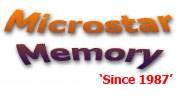
Mon-Fri 10am-6pm EST
Saturday 10am-5pm EST
Closed Sundays
Conventional Memory is the first 640 kilobytes of an IBM PC's memory. Prior to extended memory such as EMS, XMS, and HMA, real mode applications could use only this part of the memory. Even when extended memory is present, real-mode applications have to be specially programmed to use it using a complex system of overlays; consequently, many applications continued to use only conventional memory.
As DOS applications grew larger and more complex in the late 1980s, it became common practice to free up as much conventional memory as possible by moving device drivers and TSRs into Upper Memory Blocks (UMBs). For more information on this, see the article on the Upper Memory Area.
With modern operating systems and 32-bit machines the distinction between conventional and extended memory is rarely relevant, since all memory can be accessed uniformly in protected mode, but for older real mode OSes such as MS-DOS it was often worthwhile to tune the system to load drivers and other system components into Upper Memory Blocks - chunks of extended memory remapped into the Upper Memory Area (UMA) - in order to leave as much conventional memory as possible free for running large applications. This is detailed in the article on the UMA.

| "Here are the various used ram memory we have in stock." | ||
| 16mb EDO used Ram Memory | 32mb EDO used Ram Memory | 64mb EDO used Ram Memory |
| 32mb Sdram used Ram Memory | 64mb Sdram used Ram Memory | 128mb Sdram used Ram Memory |
| 256mb Sdram used Ram Memory | 512mb Sdram used Ram Memory | 1gig Sdram used Ram Memory |
| 128mb DDR used Ram Memory | 256mb DDR used Ram Memory | 512mb DDR used Ram Memory |
| 128mb Laptop used Ram Memory | 256mb Laptop used Ram Memory | 512mb Laptop used Ram Memory |

